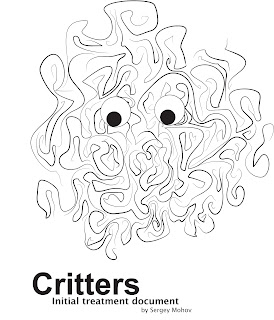I am a game designer, so things I will be talking about stuff that concerns game designers, however, you certainly can try to apply them to your life too, just change games to, say, legal papers or building projects. This list presents your enemies, which will disguise themselves as your friends, and then stab you in the back when you least expect it.
Enemy #5. The Hobby Complex

You have been playing games since you were a little kid. Everybody around you plays them, and later you discuss what happened on arena last night and how cool that guy’s Modern Warfare 2 profile is. Then suddenly you understand that you are no longer a part of this sparkling living small world. You don’t see just how fun games are—instead you start to see how they work. That’s the moment when you become a game designer. But, unfortunately, at the same moment your enemy kicks in—that enemy’s name is the Hobby Complex.
You find yourself reading boring Gamasutra articles and refusing to play just a few more rounds in Left 4 Dead 2. Your friends start to think that you are different from them, and the more your game design education progresses—the less you have time for actual playing. Don’t let this situation fool you. It’s okay to learn. You might try to return to what it’s been before, but that just won’t work like that anymore. Your only option here is to face your first enemy, deal with it and move on.
Enemy #4. Romance
Serious relationships, they call it. You are 19, the chick you’ve been dating for the last two months is 18. Face it, you’re never gonna marry her. You can’t even tell if she’s really into you as much as you are into her (vice versa scenario is also possible). The thing is, what are the odds of this relationship not ending within the next year? You probably have some kind of statistics of your own. Now take the number of 1 year+ relationships you have had by now, divide it by the overall number of girlfriends/boyfriends you had, and you will get the chance that this relationship will develop.

The 2,5% chance doesn’t mean that you have to go on and dump your girlfriend over the phone right away. It just means that you shouldn’t get your hopes up too high, because if you do that, when the time to break up comes, it will be tough. And when it happens, think twice about amounts of time and money you’ve spent while dating. You could be studying and getting successful instead. Just wait a few more years, and your statistics will change, but you certainly don’t want to do this right now.
Then again, having sex doesn’t hurt.
Enemy #3. Obsessions
Can you picture Sid Meier watching episodes of South Park one by one and then switching to How I Met Your Mother only to wait until the download of House ends? If you are watching TV shows to learn the language, it is okay, but you gotta catch the moment when this great comprehension exercise turns into a sit-back habit, which will haunt you to the extent when you won’t be able to eat without a new episode of anything.

You have to think harder about your priorities. Maybe it’s time to stop watching and start playing again instead. This will ensure that the Hobby Complex doesn’t return, and help you realize that you were obsessed. This, of course, also applies to collecting stamps, writing anime fanfics and shopping for shoes.
World of Warcraft’s legendary tip about taking everything in moderation (even World of Warcraft itself) was composed by a great samurai, who has obviously worked in Blizzard. Now I challenge you to go and try to beat him, and when you do, you can take his sword and inscribe a message of your own—the opposite statement. Only you won’t, because by that time you will have realized that he was right and you were wrong in the first place.
Enemy #2. Conventional Education
Clearly, not everyone can get a game design degree, and those who can not, go to universities to study stuff they will never get to use. The wide-spread delusion that anything can come in handy some day is a delusion and nothing but that. You will never get to use ecology, biochemistry, automation theory and visual basic programming. In fact, computer sciences students don’t get everything they need to know from classes and have to study on their own anyways. So the obvious choice here is to pick something that is relatively easy for you, will provide a decent level of general knowledge and at the same time won’t interfere with your real education.
You might wanna create at least one game project while you are still a student, and this one project will definitely require some time. Your best friends are Gamasutra, Amazon and your French class.
Your university studies are just something you have to go through in order to get a math, psychology and marketing basis. Not that you can’t learn all that stuff on your own, you just need a degree, really.
Enemy #1. Internets
Twitter, Facebook, MySpace, Flickr, Chatroulette, Tumblr, Formspring, Digg, Bebo, Friendster, Delicious, LiveJournal, Last.fm, Linkedin (no, it won’t help you find a job!), Wordpress, DeviantArt, Blogger. Places you like to chat with your friends, huh? A profile here and there won’t hurt, right? Nothing’s wrong with having an online photo album, ain’t that the truth?
No, it ain’t. Take a dip in the social networking pool, and you will be grabbed by your neck and drowned in the dark waters of empty nothingness. Social networking won’t give you anything. In fact, in most cases neither will usage of IMs. Do have a Google Docs account. Do find out about business models. Do have a profile for your new project. DON’T let the internet consume you. So, following this advice, get the hell out of this blog before you decide to create one of your own!












